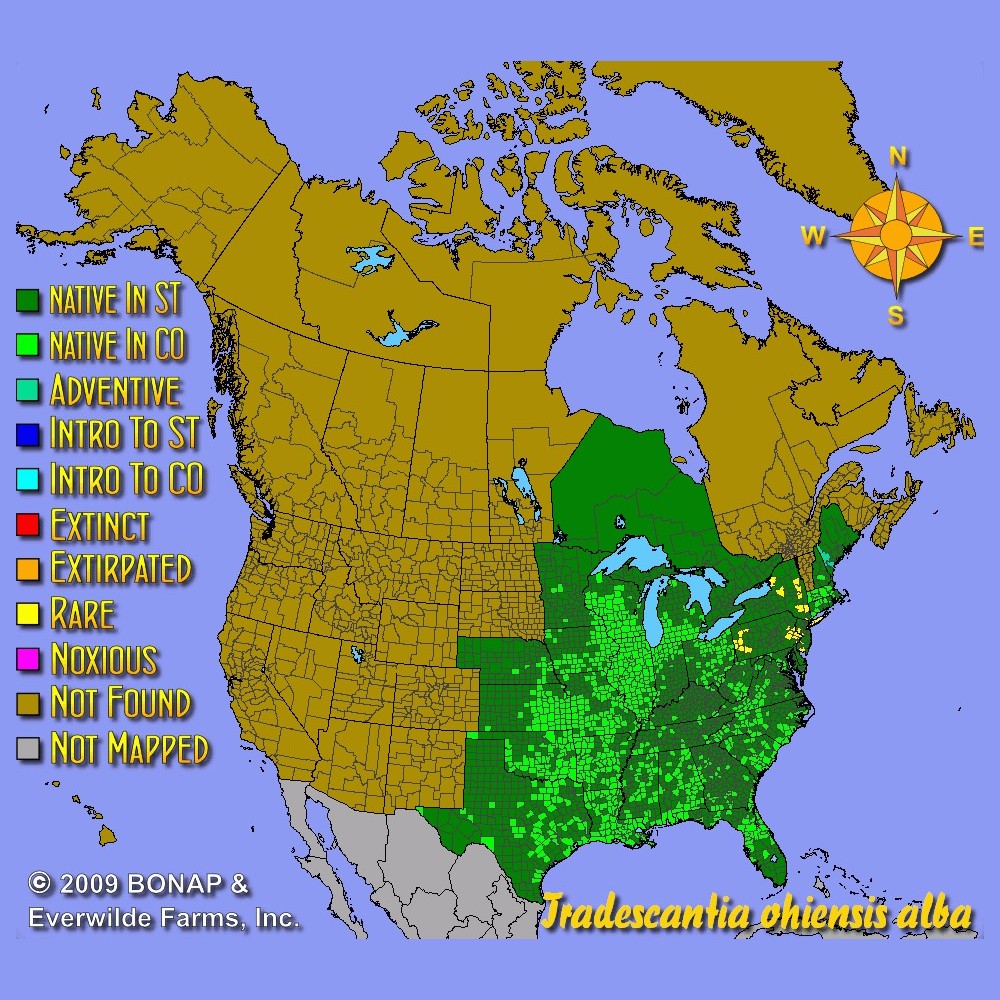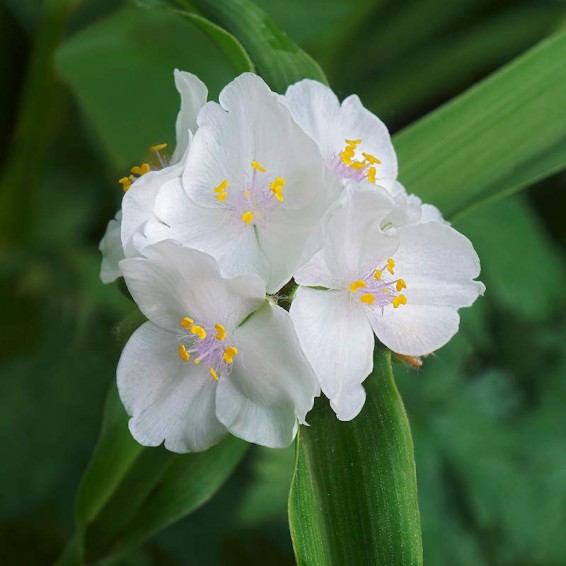White Ohio Spiderwort Seeds
Tradescantia ohiensis alba
- HOW TO GROW
- FAST FACTS
HOW TO GROW
Sowing: Direct sow in late fall, planting just below the surface of the soil. For spring planting, mix the seeds with moist sand and store in the refrigerator for 4 months before planting. Keep the soil lightly moist until germination.
Growing: Water seedlings occasionally until they become established. Though they prefer rather moist soil, mature plants tolerate some drought in addition to growing in shallow or rocky soil. Watering in especially dry weather will increase blooming. This plant may self-seed and spread slowly by rhizomes, and attracts bees. Mature plants can be divided.
Harvesting: These blossoms do not perform well as cut flowers, and are best enjoyed outdoors.
Seed Saving: After the flowers fade, the rounded seed pods will begin to form. Since they soon split open and drop their seed, gather the pods as soon as they begin to turn from green to yellow; the mature seeds will be a gray color. Spread the pods out to dry away from direct sunlight. Crush the dried pods slightly to release the seed, then separate the seed from the plant material. Store the cleaned seed in a cool, dry place.
FAST FACTS
Common Names: Snotweed
Latin Name: Tradescantia ohiensis alba
Species Origin: US Native Wildflower
Type: Native Wildflowers
Life Cycle: Perennial
USDA Zones: 3, 4, 5, 6, 7, 8, 9, 10
US Regions: Plains/Texas, Midwest, Northern, Northeast, Southeast
Seeds per Ounce: 8,000
Stratification: Cold/Wet for 16 Weeks
Germination Ease: Stratify 16 Weeks
Sunlight: Full Sun, Part Sun
Height: 30 Inches
Color: White
Bloom Season: Blooms Late Spring, Blooms Early Summer
Uses: Attracts Pollinators, Attracts Honeybees, Cut Flowers
DESCRIPTION

HOW TO GROW
Sowing: Direct sow in late fall, planting just below the surface of the soil. For spring planting, mix the seeds with moist sand and store in the refrigerator for 4 months before planting. Keep the soil lightly moist until germination.
Growing: Water seedlings occasionally until they become established. Though they prefer rather moist soil, mature plants tolerate some drought in addition to growing in shallow or rocky soil. Watering in especially dry weather will increase blooming. This plant may self-seed and spread slowly by rhizomes, and attracts bees. Mature plants can be divided.
Harvesting: These blossoms do not perform well as cut flowers, and are best enjoyed outdoors.
Seed Saving: After the flowers fade, the rounded seed pods will begin to form. Since they soon split open and drop their seed, gather the pods as soon as they begin to turn from green to yellow; the mature seeds will be a gray color. Spread the pods out to dry away from direct sunlight. Crush the dried pods slightly to release the seed, then separate the seed from the plant material. Store the cleaned seed in a cool, dry place.
FAST FACTS
Common Names: Snotweed
Latin Name: Tradescantia ohiensis alba
Species Origin: US Native Wildflower
Type: Native Wildflowers
Life Cycle: Perennial
USDA Zones: 3, 4, 5, 6, 7, 8, 9, 10
US Regions: Plains/Texas, Midwest, Northern, Northeast, Southeast
Seeds per Ounce: 8,000
Stratification: Cold/Wet for 16 Weeks
Germination Ease: Stratify 16 Weeks
Sunlight: Full Sun, Part Sun
Height: 30 Inches
Color: White
Bloom Season: Blooms Late Spring, Blooms Early Summer
Uses: Attracts Pollinators, Attracts Honeybees, Cut Flowers




